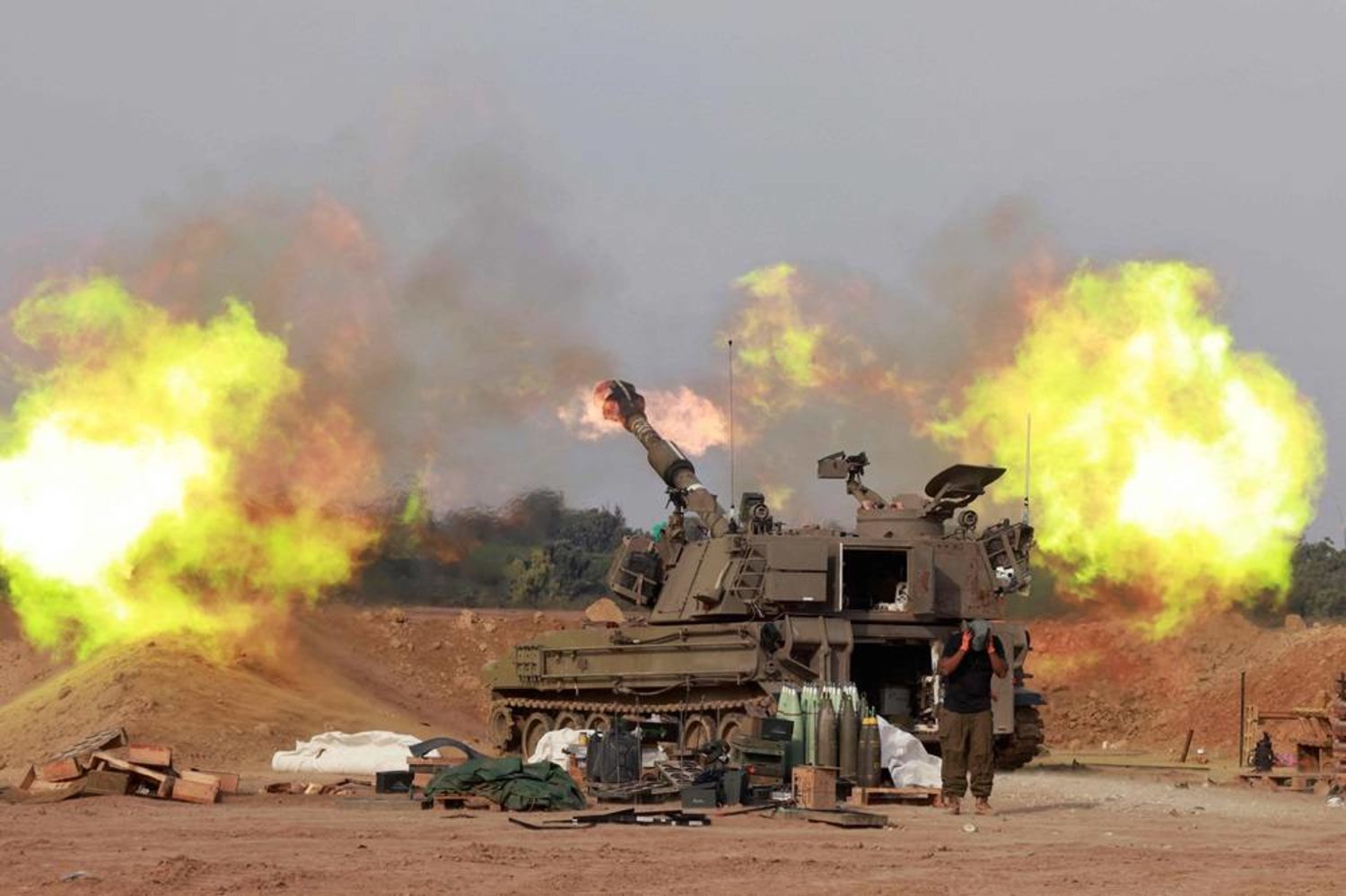Israel and US are at odds over conflicting visions for post-war Gaza

The United States has offered strong support to Israel in its war against the Hamas militant group that rules the Gaza Strip. But the allies are increasingly at odds over what will happen to Gaza once the war winds down.
Israel’s prime minister, Benjamin Netanyahu, this week announced that Israel would retain an open-ended security presence in Gaza. Israeli officials talk of imposing a buffer zone to keep Palestinians away from the Israeli border. They rule out any role for the Palestinian Authority, which was ousted from Gaza by Hamas in 2007 but governs semi-autonomous areas of the occupied West Bank.
The United States has laid out a much different vision. Top officials have said they will not allow Israel to reoccupy Gaza or further shrink its already small territory. They have repeatedly called for a return of the internationally recognized Palestinian Authority and the resumption of peace talks aimed at establishing a Palestinian state alongside Israel.
These conflicting visions have set the stage for difficult discussions between Israel and the U.S.
Here’s a closer look at the issues.
SHAKY COMMON GROUND
Israel declared war on Hamas after the Islamic militant group burst across its southern border on Oct. 7, slaughtering some 1,200 people, mostly civilians, and kidnapping more than 240 others. President Joe Biden quickly flew to Israel on a solidarity mission, and his administration has strongly backed Israel’s right to defend itself while providing weapons and military assistance.
Israel has said its goal is to destroy Hamas — a difficult task given the group’s deep roots in Palestinian society.
The U.S., which along with other Western countries considers Hamas a terrorist group, has embraced this goal. But as the war drags on, it has expressed misgivings about the dire humanitarian conditions and mounting civilian death toll in Gaza, where health authorities report over 16,000 dead, at least two-thirds of them women and children. Israel says Hamas is to blame by using civilians as human shields.
Over the weekend, Defence Secretary Lloyd Austin said it is critical that Israel protect Gaza’s civilians.
“If you drive them into the arms of the enemy, you replace a tactical victory with a strategic defeat,” he said. “So I have repeatedly made clear to Israel’s leaders that protecting civilians in Gaza is both a moral responsibility and a strategic imperative.”
On Thursday, Secretary of State Antony Blinken went even farther, telling Israel that “civilian casualties remain too high and that Israel must step up its efforts to reduce them,” his office said. Blinken also called on Israel to increase the flow of humanitarian aid into Gaza.
DIFFERENT VISIONS
The biggest differences between the allies have emerged over the longer-term vision for Gaza.
Netanyahu has offered only glimpses of what he plans.
On Tuesday, he said the military would retain open-ended security control over the Gaza Strip long after the war ends, suggesting a form of extended Israeli occupation.
Netanyahu ruled out the idea of foreign peacekeepers, saying only the Israeli army could ensure that Gaza remains demilitarized. Netanyahu has also rejected a return of the Palestinian Authority, saying its leader, Palestinian President Mahmoud Abbas cannot be trusted.
“After destroying Hamas, Gaza will be demilitarized and de-radicalized so that no threat will be posed to Israel from Gaza,” said Ophir Falk, an adviser to Netanyahu. “The buffer zone may be part of the demilitarization. That’s the plan.”
Israel told Western allies and regional neighbors about the buffer zone plans as recently as last week, without offering a detailed proposal, according to Egyptians officials and Arab and Western diplomats, who insisted on anonymity to discuss the topic.
The officials said countries informed of the proposal include Egypt, Qatar, Jordan, Turkey, the United Arab Emirates and Saudi Arabia. Two Egyptian officials said it appears that Israel doesn’t have a detailed workable plan for such a zone, including its width.
“They just say, ‘it would be a temporary buffer zone,'” one of the officials said. “But when we asked for details, they don’t have answers.”
Arab countries, meanwhile, have refused to talk about postwar scenarios while the fighting continues and are demanding a cease-fire. Jordan’s foreign minister, Ayman Safadi, for instance, recently said that Arab countries would not “come and clean the mess after Israel.”
While no decisions have been taken, these ideas appear to put Israel at odds with the White House.
Biden and other top officials have repeatedly said that a “revitalized” Palestinian Authority must play a role in postwar Gaza and that Israel must seek a two-state solution involving the PA. They have ruled out a long-term re-occupation or redrawing of Gaza’s borders.
Vice President Kamala Harris laid out perhaps the clearest U.S. vision during an address in Dubai last weekend.
“Five principles guide our approach for post-conflict Gaza: no forcible displacement, no re-occupation, no siege or blockade, no reduction in territory, and no use of Gaza as a platform for terrorism,” she said. “We want to see a unified Gaza and West Bank under the Palestinian Authority, and Palestinian voices and aspirations must be at the center of this work.”
Palestinian President Mahmoud Abbas has said he would only agree to return to Gaza if it is part of a broader plan aimed at establishing an independent state that also includes the West Bank and east Jerusalem. Israel captured all three territories in the 1967 Mideast war.
Frustration with Netanyahu may not be limited to the U.S.
Amos Harel, the military affairs columnist for the Haaretz daily, said Israeli army commanders believe Netanyahu is motivated by domestic political considerations and refusing to deal with the Palestinian Authority “due to coalition constructions from his far-right partners.” Netanyahu and his hardline coalition partners oppose Palestinian independence.
HOW SERIOUS ARE THE DISPUTES?
For now, both sides seem to be focused on the shared goal of destroying Hamas.
“It’s important for them that Israel achieve the military goals because this is the starting point for any changes that can happen the day after,” said Eldad Shavit, a former high-ranking Israeli intelligence official.
He said U.S. pressure in the short term will be on immediate issues — such as pressure to minimize civilian casualties and to allow more deliveries of humanitarian aid.
The U.S. has indicated that it will show some patience after the fighting subsides.
State Department spokesman Matthew Miller said the U.S. understands “there will have to be some kind of transition period after the end of major combat operations.” He declined to say how long that would take.
But as the death toll in Gaza continues to rise, conditions deteriorate, and Biden enters an election year with significant portions of his Democratic base pushing for an end to Israel’s offensive, these differences are likely to grow in the absence of a clear endgame.
Shavit said that tensions could rise if the U.S. at some point concludes that Israel is dragging its feet or ignoring American demands. But for now, “the Americans want Israel to succeed,” he said.
Daniel Levy, a former Israeli peace negotiator who is president of the U.S./Middle East Project, a policy institute that studies the Israeli-Palestinian conflict, said the Americans are unlikely to put their foot down.
He cited what he described as a tepid American response to heavy civilian casualties in southern Gaza as an indicator of what lies ahead.
“Israelis have a sense that their road to run is not endless, but they still feel they have lots of road to run,” he said.



